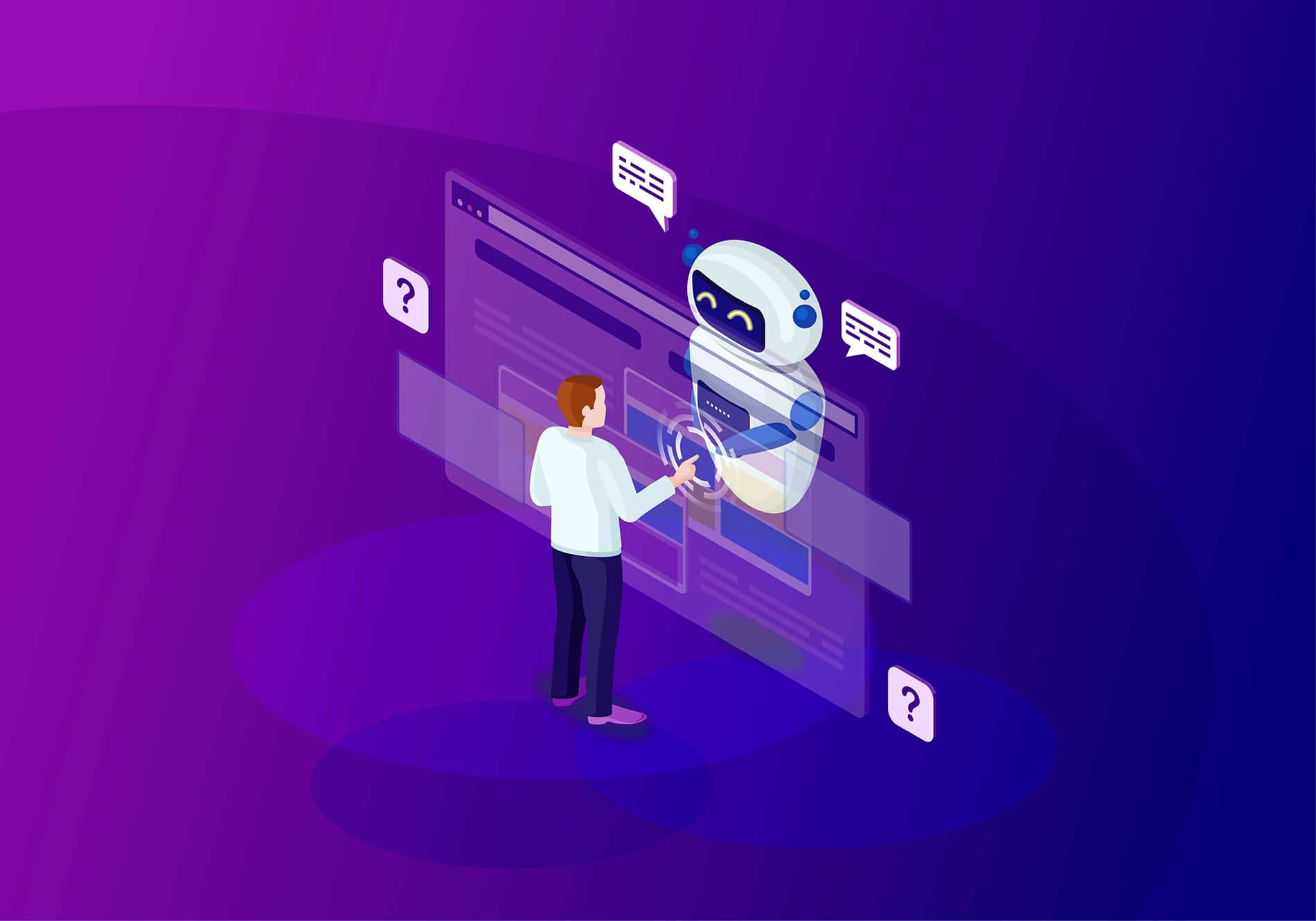In today’s rapidly evolving digital landscape, companies are constantly seeking innovative ways to improve their IT Service Management (ITSM) processes in order to better serve customers and clients. One such cutting-edge solution is the use of conversational AI-powered chatbots.
These intelligent conversational AI chatbots have the potential to revolutionize the way IT support is delivered by automating routine tasks and providing instant assistance to users. In this blog post, we will explore the top 5 reasons why adding a conversational AI chatbot to your self-service portal can vastly improve your service management and delivery.
What Are Conversational AI Chatbots?
Conversational AI chatbots are intelligent software applications that can understand and respond to user queries in natural language. Their primary role in IT Service Management is to provide quick, efficient support to end-users by resolving common issues, answering questions and guiding users through various processes. By incorporating conversational AI chatbots into your self-service portal, you can significantly enhance the overall user experience and streamline your IT support operations. You can also deflect tickets, requests and calls/emails from your IT help desk.
It is important to note the distinction between conversational AI chatbots and traditional chatbots.
When talking about traditional chat, we mean a chatbot experience that has a limited conversation path. It can take inputs and guided dialog paths to return answers in a simplified question/answer format – similar to what you’d get if you searched a knowledge base or FAQ – there aren’t many actions a user can take from the conversation with a traditional chatbot.
Traditional chatbots don’t fare as well as those built on conversational AI. In fact, a recent market study from CIO.com found that nearly 76 percent of chatbot customers report user frustration with existing solutions. However, When conversational AI is used, the study shows more than 61 percent of respondents could effectively resolve problems vs just 35 percent when traditional chat is used.
Common Issues with Self-Service Portals
Self-service portals are designed to empower users to find solutions to their IT issues without requiring direct intervention from the IT support team. However, many organizations face challenges in delivering an effective self-service experience due to:
- Poor user interface and navigation
- Outdated or irrelevant knowledge base articles
- Lack of personalization and contextual understanding
- Inability to handle complex queries or escalate issues efficiently
- Time-consuming manual processes for ticket submission and resolution
These issues can lead to increased frustration for users and higher reliance on traditional support channels, negating the benefits of a self-service portal.
Top 5 Benefits of Adding a Conversational AI Chatbot
Now, let’s delve into the key advantages of integrating a conversational AI chatbot into your self-service portal.
- Enhanced User Experience – By providing instant, accurate responses to user queries, conversational AI chatbots can significantly improve the overall user experience. For example, a conversational AI chatbot can quickly guide a user through password reset procedures, reducing the need for manual intervention from the IT support team.
- Reduced Resolution Time – Conversational AI chatbots can resolve common issues in a matter of seconds, drastically reducing the resolution time for IT support queries.
- Increased Efficiency and Cost Savings – By automating routine tasks, conversational AI chatbots can free up valuable time and resources for your IT support team. This allows them to focus on more complex, high-priority issues. According to Gartner, chatbots can reduce IT support costs by up to 30%.
- Scalability and 24/7 Availability – Unlike human support agents, AI chatbots can simultaneously handle multiple queries and operate around the clock, ensuring uninterrupted support for users across different time zones.
- Continuous Learning and Improvement – Conversational AI chatbots are built on machine learning algorithms, which means they continuously learn and improve their ability to understand and respond to user queries. This results in better, more accurate support over time.
Tips for Implementing Conversational AI Chatbots
As you start to identify the right conversational AI tool for your organization, you’ll want to plan for the implementation of the new tool, as implementing conversational AI chatbots in your ITSM processes requires careful planning and execution.
Here are some best practices to follow:
- Define Use Cases: Identify the specific use cases for chatbots in your ITSM processes, such as incident management, password resets or software installations. If you plan to expand to use cases outside of IT (for Enterprise Service Management), then you’ll want to plan for those use cases as well – things like PTO requests, benefits enrollment, etc.
- Choose the Right Platform: Select a chatbot platform that aligns with your organization’s ITSM processes and integrates with your existing IT systems.
- Train the Chatbot: Train the chatbot to understand the language and context of your IT systems, and to respond to user queries accurately and efficiently. This part is critical to the success of your chatbot user experience.
- Monitor Performance: Monitor the chatbot’s performance regularly to ensure that it is meeting user needs and achieving the desired business outcomes.
- Continuously Improve: Continuously improve the chatbot’s performance by analyzing user feedback, identifying areas for improvement and updating the chatbot’s algorithms and training data.
For Bowdoin College, client experience is their number one priority. With the help of TeamDynamix, Bowdoin College has supercharged its support desk with conversational AI —allowing customers and guests to get help with anything from setting up their devices to increasing their print balances all without the need for human intervention.
“Being able to integrate the bot with backend systems is very exciting,” Jason Pelletier, senior director of client services and technology for Bowdoin College. said. “With TeamDynamix, we have one platform for ITSM with a chat tool that can integrate with our enterprise systems, and then from there we can build automation – this is something we could never have done with our previous solution.”
Employees have traditionally reached out to the IT support team to ask when their computer is eligible for replacement. Now, the bot can answer this question automatically with a tailored personalized answer.
By integrating the chat with the asset management system, the query will take the users’ information from SSO to then identify and look up their asset records. Once retrieved, the chat can then take that information back to the chat window.
“We are answering questions faster, with accurate personalized data,” Pelletier said. “When a customer has a question about their equipment, the chat is integrated back into our asset system so that it can give full details to the user.”
In a more fun and whimsical example of the bot’s capabilities, students and staff can even ask it what’s for lunch or dinner at a specific dining facility—and the bot will return the full menu.
“The students use this capability all the time because it’s the fastest way to find out what’s for lunch,” Pelletier said. “It’s something that drives people back to the bot, which is the whole point. You want people to use it, even if it’s for silly reasons because eventually they’ll figure, ‘Hey, I’m going to ask it how to get support for my laptop as well.’”
The effort required to set up the bot has been minor, and its impact has been incredible, Pelletier said. It has enabled IT staff to offload much of the work they do in answering peoples’ questions to the bot, allowing them to focus on more important tasks.
“We’re just scraping the surface right now,” he said. “Eventually, I think we could have the bot handle up to 30 percent of the questions our help desk staff are getting now.”
Not only does the bot reduce the workload for IT support staff; but it also creates a better and more equitable experience for students.
“Some people are outgoing, and they have no problem in coming to our Tech Hub to get technical support,” Pelletier explained. “Others have no problem communicating by email. But there are also many users with a language barrier or another reason why they might feel uncomfortable interacting with an actual person. There are also some users who are night owls and need support late at night when we’re closed.
The chatbot allows us to meet users where they are and give them the assistance they need—whenever, wherever and however they might want it. If we can relieve even some of the stress they might feel, that enhances their experience.”
Incorporating a conversational AI chatbot into your self-service portal is a smart investment that can significantly enhance user experience, reduce resolution times and cut down on IT support costs. By leveraging the power of conversational AI, you can transform your self-service portal into an efficient, user-friendly support tool that meets the needs of today’s digitally savvy users.
If you’d like to learn more about traditional chatbots vs. conversational AI, check out: Chatbot Frustration and the Promise of Conversational AI.

